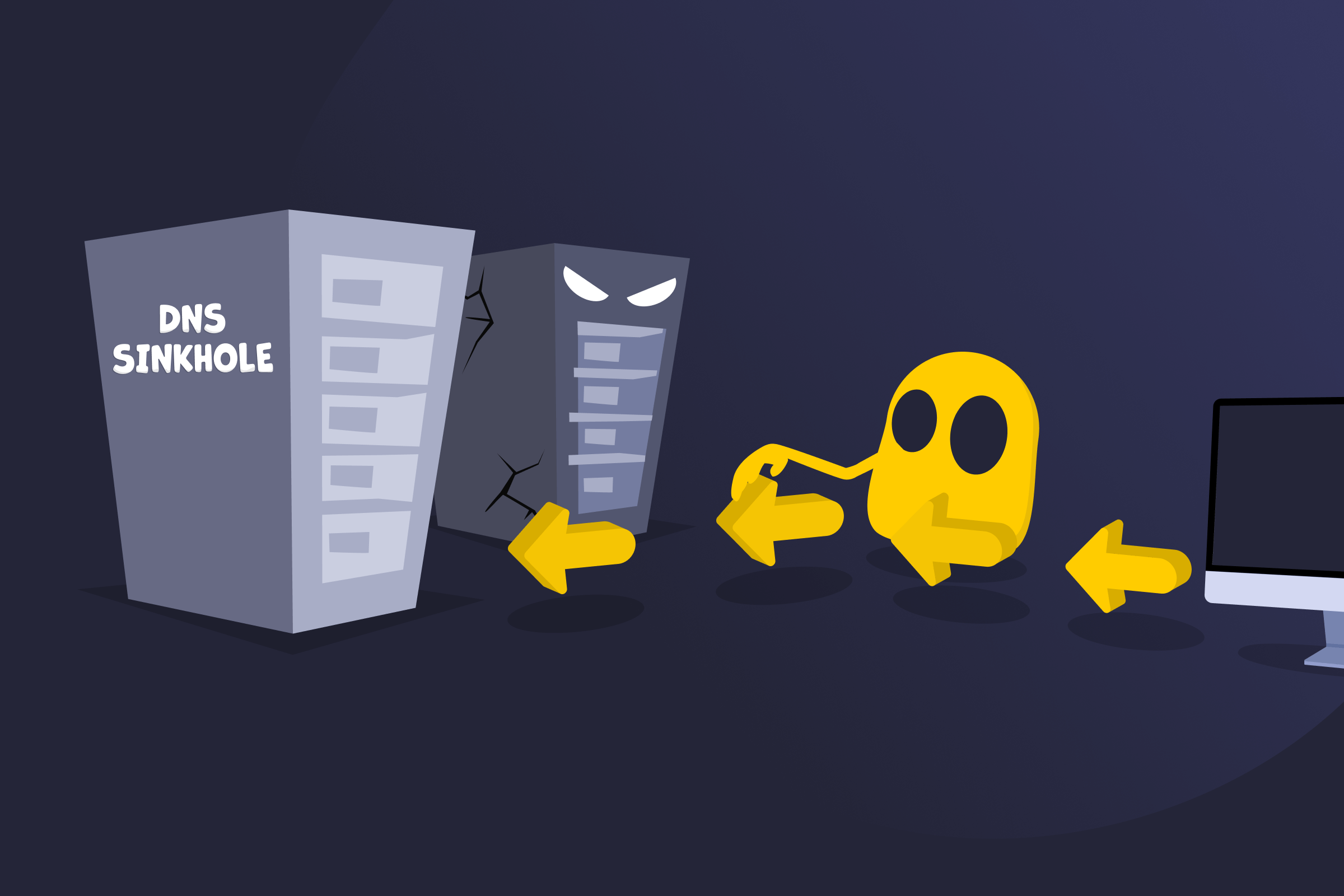DNS Sinkhole

DNS Sinkhole Definition
A DNS sinkhole is a security measure that redirects DNS requests from malicious or unwanted domains to a safe, controlled DNS server. It’s used to block malware, phishing attempts, or botnet connections before they can reach a device and cause harm.
How a DNS Sinkhole Works
When a device requests to visit a domain name, the DNS server usually directs it to the correct IP address to open the site. A DNS sinkhole monitors this process by checking each DNS request against a list of known malicious domains.
If it finds a match, it sends the traffic to a safe IP address or blocks the connection entirely. For example, it might redirect someone to a notice page explaining that the site is blocked under company policy. Administrators can then monitor these redirected requests to identify infected or suspicious devices on the network.
DNS Sinkhole vs DNS Blackhole
DNS sinkholes and DNS blackholes block connections to potentially harmful domains, but they handle traffic differently.
| DNS Sinkhole | DNS Blackhole | |
| Function | Redirects DNS requests for malicious domains to a controlled or safe IP address | Drops DNS requests silently without redirecting them |
| Visibility | Lets administrators monitor which devices attempted to connect to the domain | Provides no data for monitoring or analysis |
| Use case | Used in security environments to block and analyze malicious traffic | Used for silent blocking where no feedback or logging is needed |
| Result | Blocks and tracks unwanted traffic | Blocks traffic without leaving a trace |
Where Are DNS Sinkholes Used?
- Business networks: Sinkholes block malware and HTTPS phishing, and give administrators an overview of infected devices.
- ISPs: They prevent people from connecting to known malicious or fraudulent websites.
- Cybersecurity: DNS sinkholes capture and analyze traffic from botnets in a controlled environment.
- Government and law enforcement: They disrupt large-scale botnets or track malware command-and-control servers.
- Public DNS services: Sinkholes protect people by filtering harmful domains at the DNS level before the connection is made.
Read More
FAQ
A DNS sinkhole monitors DNS requests to identify which devices try to access blocked or malicious domains. This helps administrators detect infected systems or suspicious activity within a network.
DNS sinkholes are used by ISPs, cybersecurity researchers, enterprises, and government agencies. They help block threats, collect data on attacks, and prevent compromised devices from reaching harmful servers.
A DNS sinkhole can disrupt malware by blocking its connection to command-and-control servers and limiting it from spreading. However, it doesn’t remove the malware from the device itself.

 45-Day Money-Back Guarantee
45-Day Money-Back Guarantee